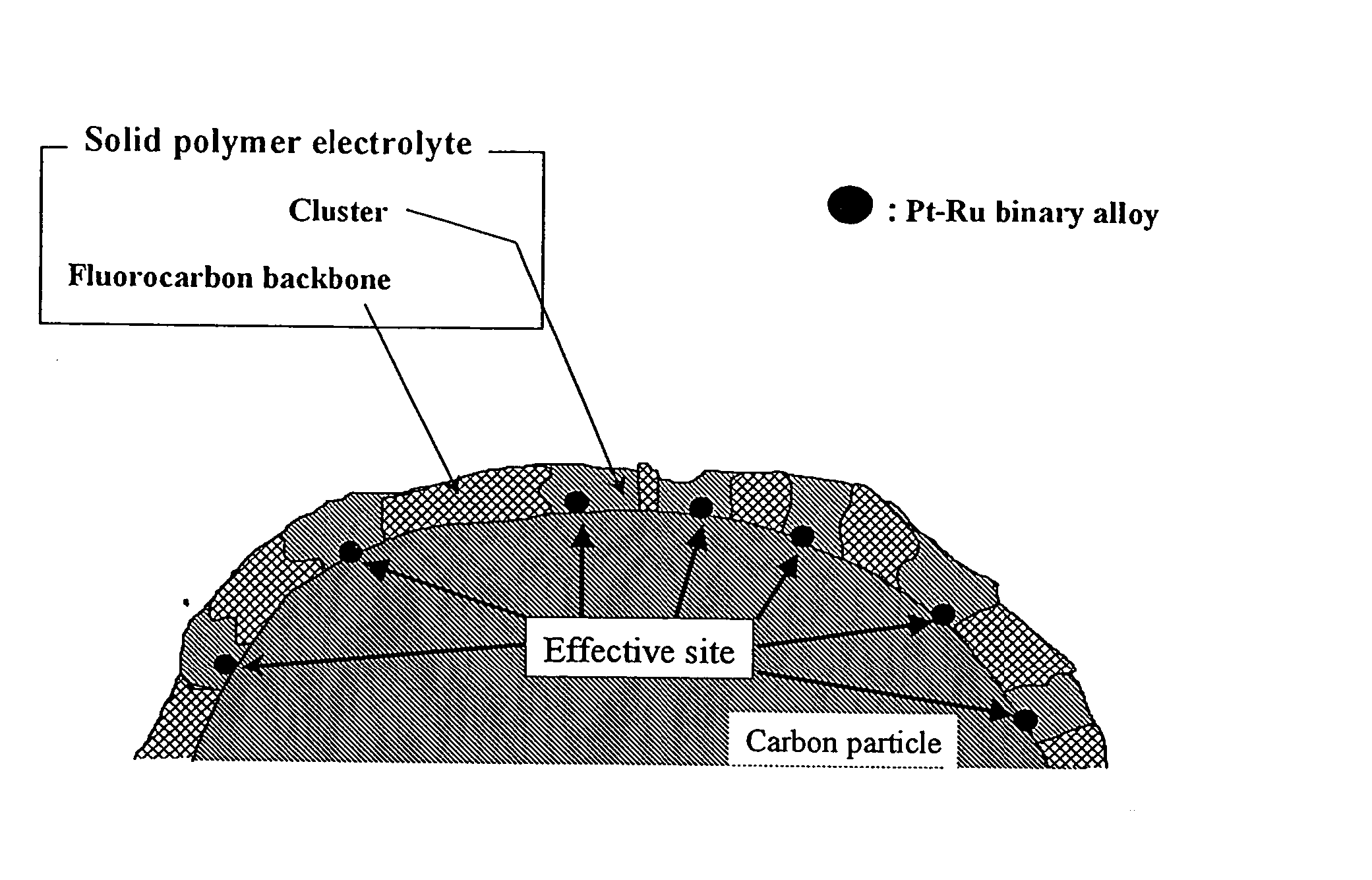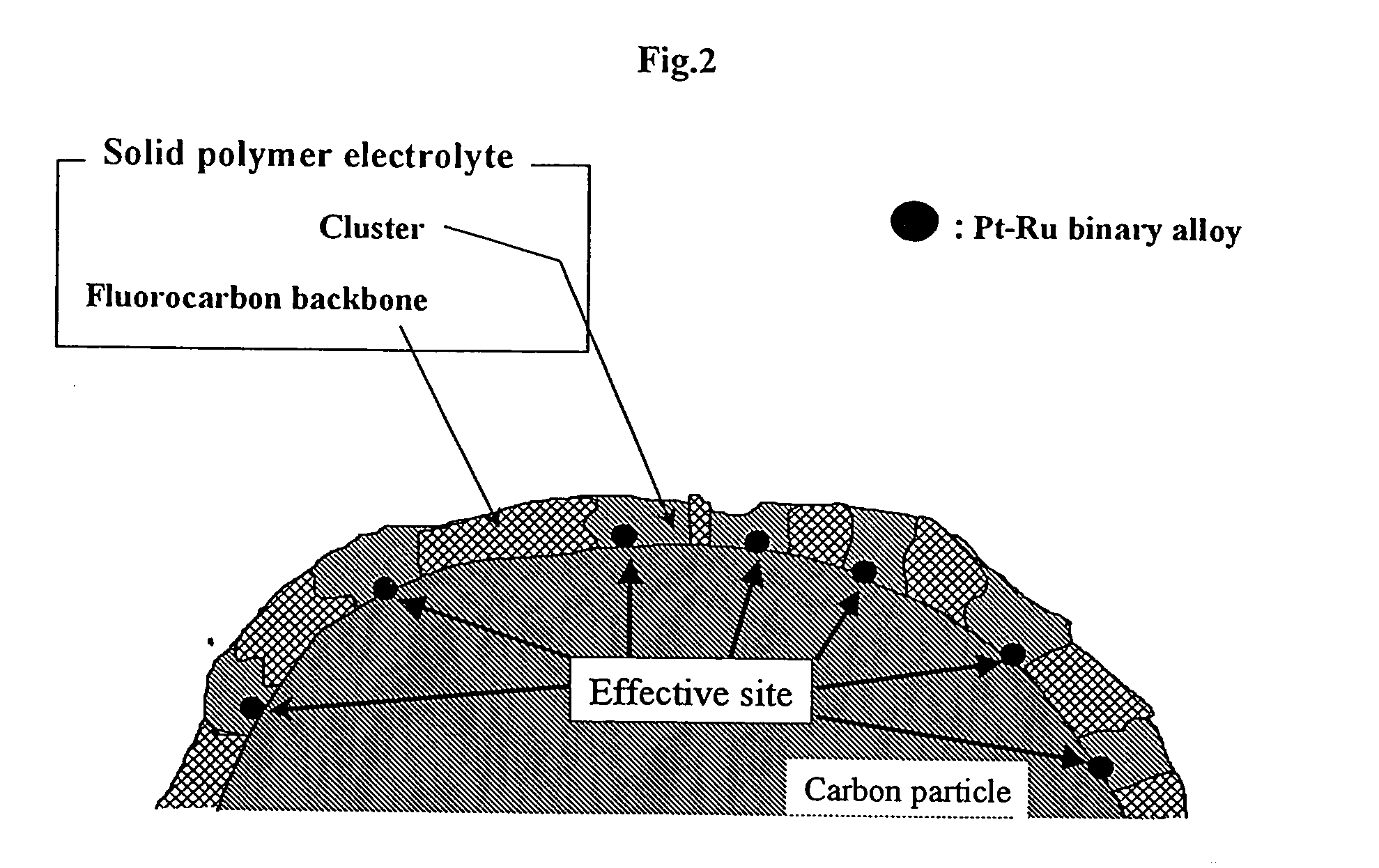Manufacturing processes of catalyst layer for fuel cell
a technology of catalyst layer and manufacturing process, which is applied in the direction of physical/chemical process catalyst, cell component, metal/metal-oxide/metal-hydroxide catalyst, etc., can solve the problem of long time required for reducing the loading level of platinum catalyst particles, the problem of commercialization to be overcome, and the effect of shortening the aging tim
- Summary
- Abstract
- Description
- Claims
- Application Information
AI Technical Summary
Benefits of technology
Problems solved by technology
Method used
Image
Examples
example 1
[0021] A mixture of 54 g of a proton conductive polymer resin solution (5 mass % Nafion solution manufactured by Aldrich Inc.) and 5 g of carbon powder (Vulcan XC-72 manufactured by Cabot Corp.) was kneaded and concentrated with heating at 65° C. to make a paste. The paste was then applied to FEP (Tetra fluoroethylene hexa fluoro propylene copolymer) sheet to form the paste layer followed by drying at 25° C. The dry layer was immersed into mixed aqueous solution containing 3.8×10−2 mol l−1 of [Pt(NH3)4]Cl2 and 1.3×10−2 mol l−1 of [Ru(NH3)6]Cl3 for 24 hours to substitute [Pt(NH3)4]2+ ion and [Ru(NH3)6]3+ ion for proton in the cluster of proton conductive polymer by ion-exchange reaction followed by washing process with de-ionized water. The platinum and ruthenium ion was reduced by hydrogen atmosphere at 200° C. for 24 hours to form the premature metallic platinum-ruthenium binary alloy. The layer was then immersed in 5.0×10−1 mol l−1 of KOH for 24 hours to substitute K+ ion for prot...
example 2
[0022] The single PEFC (B) according to the present invention was prepared using the anode catalyst layer of Pt—Ru 0.022 mg cm−2 in the same process as the case of example 1 besides 5.0×10−1 mol l−1 of NaOH instead of 5.0×10−1 mol l−1 KOH.
example 3
[0023] The single PEFC(C) according to the present invention was prepared using the anode catalyst layer with Pt—Ru 0.022 mg cm−2 in the same process as the case of example 1 besides 5.0×10−1 mol l−1 of Ca(OH)2 instead of 5.0×10−1 mol l−1 KOH, though the colloidal particle was observed.
PUM
| Property | Measurement | Unit |
|---|---|---|
| Temperature | aaaaa | aaaaa |
| Temperature | aaaaa | aaaaa |
| Temperature | aaaaa | aaaaa |
Abstract
Description
Claims
Application Information
 Login to View More
Login to View More - R&D
- Intellectual Property
- Life Sciences
- Materials
- Tech Scout
- Unparalleled Data Quality
- Higher Quality Content
- 60% Fewer Hallucinations
Browse by: Latest US Patents, China's latest patents, Technical Efficacy Thesaurus, Application Domain, Technology Topic, Popular Technical Reports.
© 2025 PatSnap. All rights reserved.Legal|Privacy policy|Modern Slavery Act Transparency Statement|Sitemap|About US| Contact US: help@patsnap.com



